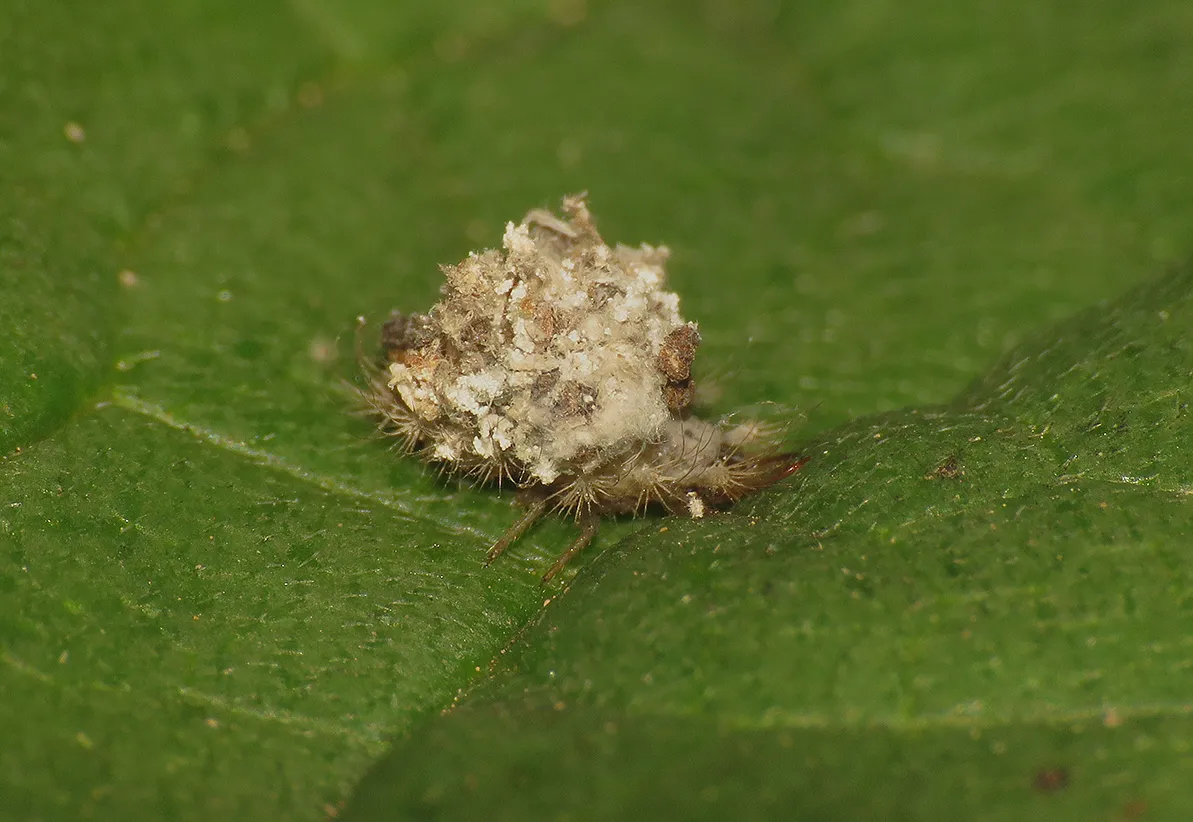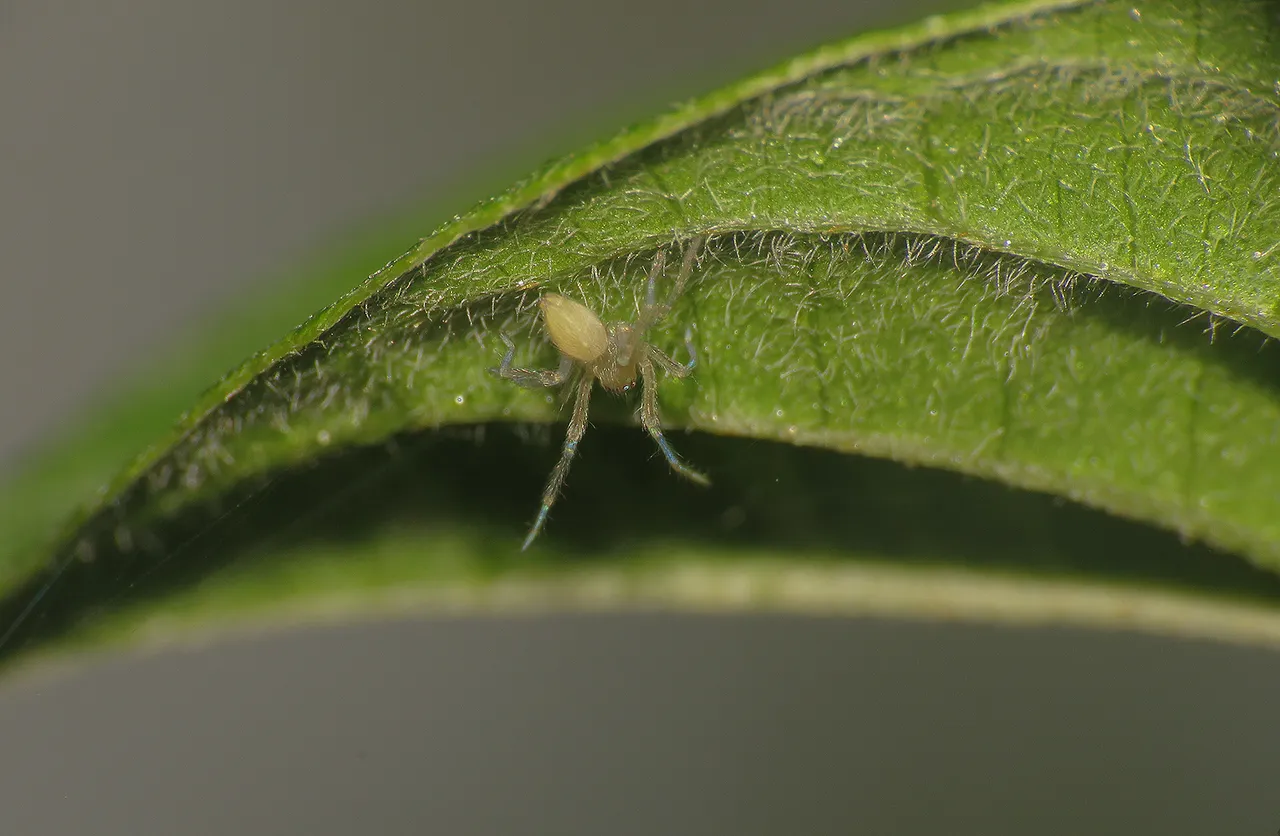The photographs in this post were taken early in the morning, on the 29th of June this year.
I drove about forty-fifty kilometers north of my hometown and stopped a couple of kilometers from a small village in the rural area around the town called Zminj. After walking a bit along the line of shrubs and small trees on the edge of a meadow ...
... my attention got soon caught by one specific plant because on it, I found a nice variety of insects.
This small butterfly from the Lycaenidae family, the Aricia agestis, was the first species I encountered that morning. The butterfly was quiet and easy to photograph in those early hours of the day. The flash of my camera provided the light that can make colors more vivid, but ...

... but since I liked the look of the scene in the subdued ambient light as well, I took another photograph using a longer exposure and that natural light only. Here you can also see the small unripe fruit of the shrub.

The plant in question is the Cornus sanguinea ...
... a relatively large deciduous shrub that can grow up to six meters.

Here you can see the Dolycoris baccarum shield bug. Adults of this species can be often seen feeding on the berries produced by various shrubs including the Cornus sanguinea. Nymphs feed on smaller herbaceous plants that grow under the shrubs and in the nearby meadow.
This colorful beetle was photographed on one of the leaves very close to the ground.

It's a weevil. The genus is definitively Lixus. The family is Curculionidae. But when it comes to the name of this particular species, I'm not so sure. It could be the Lixus sanguineus. Or the Lixus brevipes. Or some other Lixus.

Here you can see another shield bug.

The small wingless nymph of the Rhaphigaster nebulosa.

This lovely moth ...

... was hanging on one of the leaves closer to the top of the shrub.
The light was pretty low so I first took a shot with the flash of my camera on. It was easier that way. But the strong direct light on the iridescent scales of the insect gave a pretty bad result, so I took the time to take another photograph using a longer exposure. It wasn't easy because I didn't have anything to lean the camera against, but in the end, among twenty or thirty motion-blurred pictures, I got a couple of decent photographs.

This is the Amata phegea, a diurnal moth from the Erebidae family.
On another leaf, not far from the moth ...
... I found a minuscule spider with semi-translucent legs. I don't know. Can't tell you the name of the species, but if I had to guess, I would say that it is a juvenile Clubiona caerulescens from the Clubionidae family or the equally juvenile Cheiracanthium mildei from the Cheiracanthiidae family.

On another, much thicker thread made by some other spider or caterpillar, I found a juvenile Phaneroptera nana bushcricket. The young wingless nymph was passing by slowly and carefully like a tightrope walker.
A minute later this small fly flew right into the scene ...

... landed upside down on the thread ...
... and climbed on what looked like a small cluster of desiccated Cornus sanguinea berries.

This is probably the Sapromyza quadricincta, a species from the Lauxaniidae family. I'm rarely completely sure about these very small flies. That's why I wrote probably. It looks that the fly shown in these photographs has found something edible on that dried-out plant material. The feeding apparatus is protruded and clearly visible.
A bit later, the "probably Sapromyza quadricincta, was resting on one of the neighboring leaves.

These bugs from the Rhopalidae family were found on a different kind of leaf. The name of the species is Stictopleurus punctatonervosus. I mean the name of the bugs. The leaf belongs to a small oak tree that grew among the shrubs.
This lovely little butterfly from the Lycaenidae family, Neozephyrus quercus is the name of the species, was found and photographed on the Cornus sanguinea but its life cycle is tightly connected with the oak trees.
Females lay eggs at the base of oak buds. When the caterpillars come out, they burrow into the flower buds to feed there, hidden from predators. As the larvae grow and the buds open, is time to spin a silky shelter over the young leaves and feed under the threads only at night.
Here you can see another butterfly, the considerably larger Maniola jurtina from the Satyrinae family. When the wings are folded vertically up, the butterfly looks like a fallen leaf.
After some more sniffing around the shrubs, I found a very small beetle that I haven't seen before. It looks like something from the genus Anaspis of the Scraptiidae family. But I'm still pretty far from being sure about that.
Not far from the beetle, I found another moth. This is the Pleurota aristella, a species from the Oecophoridae family.

On the higher branches, I came across a lynx spider.
A female was guarding the nest built on the cluster of berries.

Oxyopes lineatus is the name of the species. The family is Oxyopidae.

This little thing looked like a breadcrumb from a distance.

Only a closer look through the macro lens revealed a small larva covered with a shell made of its dried-out feces. This is the larval stage of the common green lacewings (Chrysoperla carnea).

Before walking back to the car and driving back home, I photographed only one more insect on the leaves of the Cornus sanguinea shrub. This small ichneumon wasp that I'm still unable to identify. The family is Ichneumonidae, of course.
The following links will take you to the sites with more information about some of the protagonists of this post. I found some stuff about them there.
https://en.wikipedia.org/wiki/Cornus_sanguinea
https://www.ukbutterflies.co.uk/species.php?species=agestis
https://www.britishbugs.org.uk/heteroptera/Pentatomidae/dolycoris_baccarum.html
https://spain.inaturalist.org/taxa/71157-Lixus
https://en.wikipedia.org/wiki/Rhaphigaster_nebulosa
https://en.wikipedia.org/wiki/Nine-spotted_moth
https://en.wikipedia.org/wiki/Phaneroptera_nana
https://en.wikipedia.org/wiki/Sapromyza_quadricincta
https://www.naturespot.org.uk/species/stictopleurus-punctatonervosus
https://en.wikipedia.org/wiki/Purple_hairstreak
https://www.ukbeetles.co.uk/scraptiidae
https://en.wikipedia.org/wiki/Pleurota_aristella
https://www.inaturalist.org/taxa/311359-Oxyopes-lineatus/browse_photos
https://en.wikipedia.org/wiki/Ichneumonidae
AND THAT'S IT. AS ALWAYS IN THESE POSTS ON HIVE, THE PHOTOGRAPHS ARE MY WORK - THE END.

















